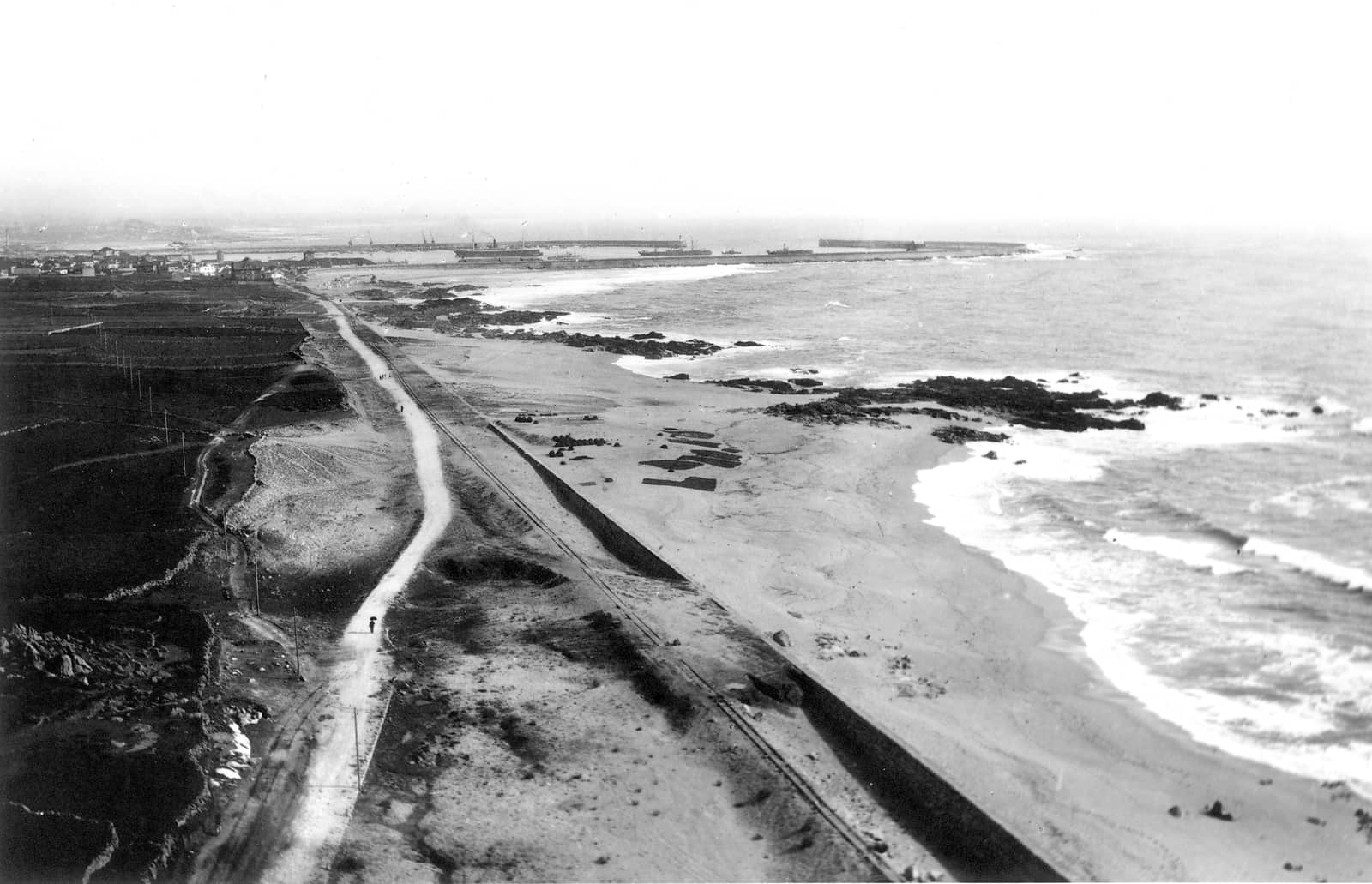The Case of Matosinhos
Downloads
DOI:
https://doi.org/10.7480/spool.2021.1.5901Keywords:
Fishing industry, canning industry, port city infrastructures, urbanisation, Matosinhos, PortugalAbstract
In this article, we seek to reconnect architectural history with social and industrial histories as a strategy for understanding the relationship between infrastructure, fishing, and urbanisation by studying the emblematic case of Matosinhos. This paper traces the formation of the port area and the process of its subsequent transformation with the development of the fishing and canning industries, to understand the relationship between urban planning, the architectures of production (infrastructures, industries, and urbanism) and the architectures of reproduction (housing), and the dynamics of the physical and economic transformations, as well as the key role played by the port in supporting the urbanisation process. In the last decades of the twentieth century, the canneries almost completely disappeared and the gap left by its concentration and modernisation led to the creation of a new urbanisation plan, directed by Álvaro Siza Vieira. Recent works, such as the seaside platform designed by Eduardo Souto de Moura and built at the beginning of the present century, the redevelopment of Leça’s shoreline in 2006 or the conversion of the ruins of a former winery into the new ‘house of architecture,’ are signs of growing functional disputes and symbolic transformations of a particular port city.
How to Cite
Published
License
Copyright (c) 2021 Diego Inglez de Souza, Ivo Pereira de Oliveira

This work is licensed under a Creative Commons Attribution 4.0 International License.

References
Agarez, R. (2013). Lisboa em Olhão/ Olhão em Lisboa — História e fábula em três bairros de habitação económica, desde 1925 [Lisbon in Olhão / Olhão in Lisbon — History and tales in three economic housing neighbourhoods, since 1925]. Revista Monumentos Cidades, património, reabilitação, No. 33, Instituto de Habitação e Reabilitação Urbana, pp. 150-161.
Agarez, R. (Ed.) (2018). Habitação — Cem anos de políticas públicas em Portugal 1918-2018 [Housing - Hundred years of public policies in Portugal 1918-2018], Instituto da Habitação e da Reabilitação Urbana.
Alves, J. F. & Dias, E. B. (2001). O fio da água — O Porto e as Obras Portuárias (Douro— Leixões) [The water thread — Porto and the harbor works (Douro — Leixões] in Revista da Faculdade de Letras - História [History — Journal of the Faculty of Languages]. Porto III Série, vol.2, 093-106.
Bandeirinha, J. A. (2011). O processo SAAL e a arquitectura no 25 de Abril de 1974 [The SAAL process and the architecture in the April 25th 1974], Editora da Universidade de Coimbra.
Cremascoli, R. (2016). No morro da Boa Nova [At the Boa Nova hill]. In L. Santiago Baptista (Ed.) Arquitetura em Concurso — Percurso Crítico pela Modernidade Portuguesa [Architecture in competition — Critical route through Portuguese modernity]. Dafne Editora, pp. 180-191.
Delgado, J.P. (2015). Uma concepção totalitária – ARS Arquitectos: Cultura, ideologia e tecnologia construtiva na década de 1930 em Portugal [A totalitarian conception - ARS architects: Culture, ideology and technology] [Doctoral Dissertation, ISCTE/IUL]. http://hdl.handle.net/10071/9993
Ellefsen, K. O. & Lundevall, T. (2019). North Atlantic Coast — A Monography of Place. Pax Forlag.
Gomes Fernandes Tato, J. (2008) Memória da Indústria Conserveira de Matosinhos, Leça da Palmeira e Perafita, 1899-2007, Matosinhos: NAPESMATE / Câmara Municipal.
Hein, C., Mager, T., & Rocco, R. (Eds.). (2019). Water resilience: Creative practices past present and future. European Journal of Creative Practices in Cities and Landscapes, vol. 2, n.1.
Hein, C. (2018). Oil Spaces: The Global Petroleumscape in the Rotterdam/The Hague Area, Journal of Urban History Vol. 44 issue: 5, pp. 887-929.
Lameira, G. & Rocha, L. (Eds.). (2009). Mapa da Habitação [Housing map]. Faculdade de Arquitectura da Universidade do Porto. https://db.up.pt/mapa_habitacao_db.
Lixa Filgueiras, O. (1994). Traineiras da Costa Portuguesa [Portuguese coast seineirs], Imprensa Nacional / Correios de Portugal.
Losa , A. (1948/ 2008). A arquitectura e as novas fábricas [The architecture and the new factories]. In Sindicato Nacional dos Arquitectos 1º Congresso Nacional de Arquitectura — Relatório da Comissão Executiva / Teses, conclusões e votos do congresso [1st National Architecture Congress — Report of the Executive Comission / Thesis, conclusions and votes of the congress]. Ordem dos Arquitectos.
Marques Pires, M. C. (2012). O atelier de arquitetura/urbanismo de David Moreira da Silva e Maria José Marques da Silva Martins — Visibilidade da memória [The architecture / urbanism studio of David Moreira da Silva and Maria José Marques da Silva Martins - Visibility of memory] [Doctoral Thesis, Faculdade de Letras da Universidade do Porto]. http://hdl.handle.net/10216/67327
Marine Spatial Planning. (n.d.). Marine Spatial Planning Programme. http://msp.ioc-unesco.org/about/marine-spatial-planning/
Matosinhos Municipal Council. (n.d.). Mapa da Arquitectura [Map of Architecture]. www.cm-matosinhos.pt/cm- matosinhos/uploads/writer_file/document/19088/Mapa_da_Arquitectura.pdf
Miranda, A. (2004). Arquitectura Industrial em Matosinhos [Industrial architecture in Matosinhos] [Dissertation, Faculdade de Arquitectura da Universidade do Porto].
Moraes Soares, D. (2004). ARS Arquitectos [ARS Architects]. [Dissertation, Escola Superior Artística do Porto].
Salgado, J. (1985). Álvaro Siza em Matosinhos [Álvaro Siza in Matosinhos]. Câmara Municipal / Pelouro da Cultura e do Turismo, pp. 135-136.
Souto de Moura, E. (2019). Memória, Projectos, Obras [Memory, projects, works], Exhibition catalogue. Casa da Arquitectura.
Tavares, A. & Inglez de Souza, D. (2020). Architecture in a can: Matosinhos and the Atlantic history of sardine architecture. Pidgin Nº27, Princeton University.
Valente, L. (2014). Protagonismo do vazio: a urbanidade do território [Protagonism of the void: the urbanity of the territory] [Doctoral Thesis, Universidade da Coruña]. http://hdl.handle.net/2183/14466



